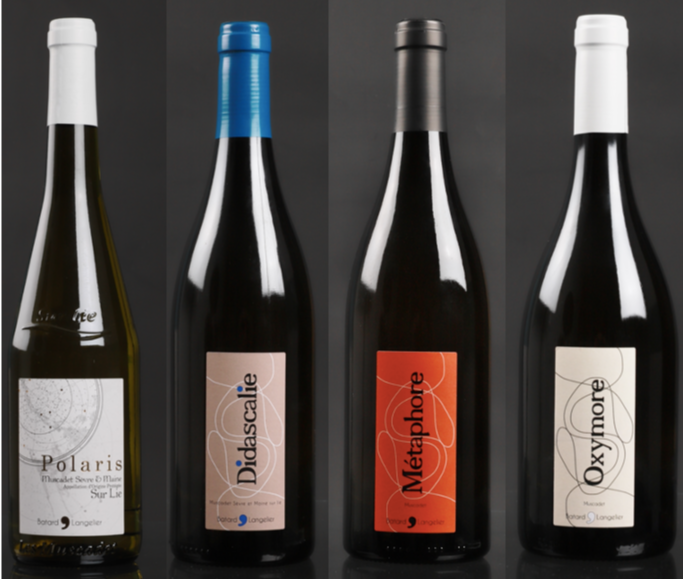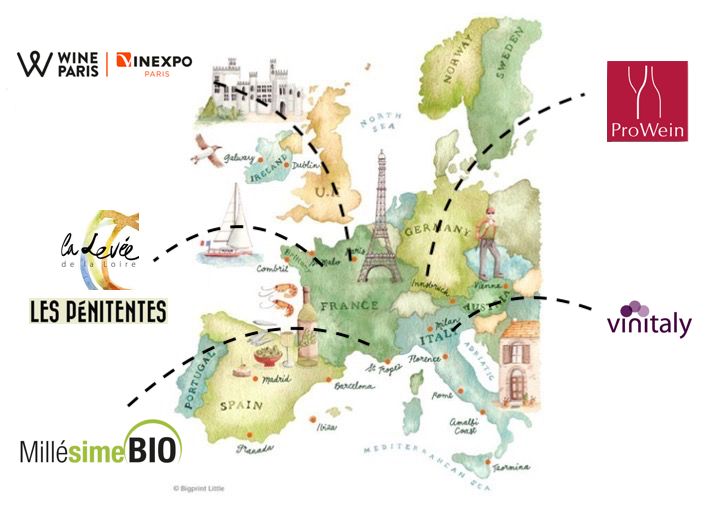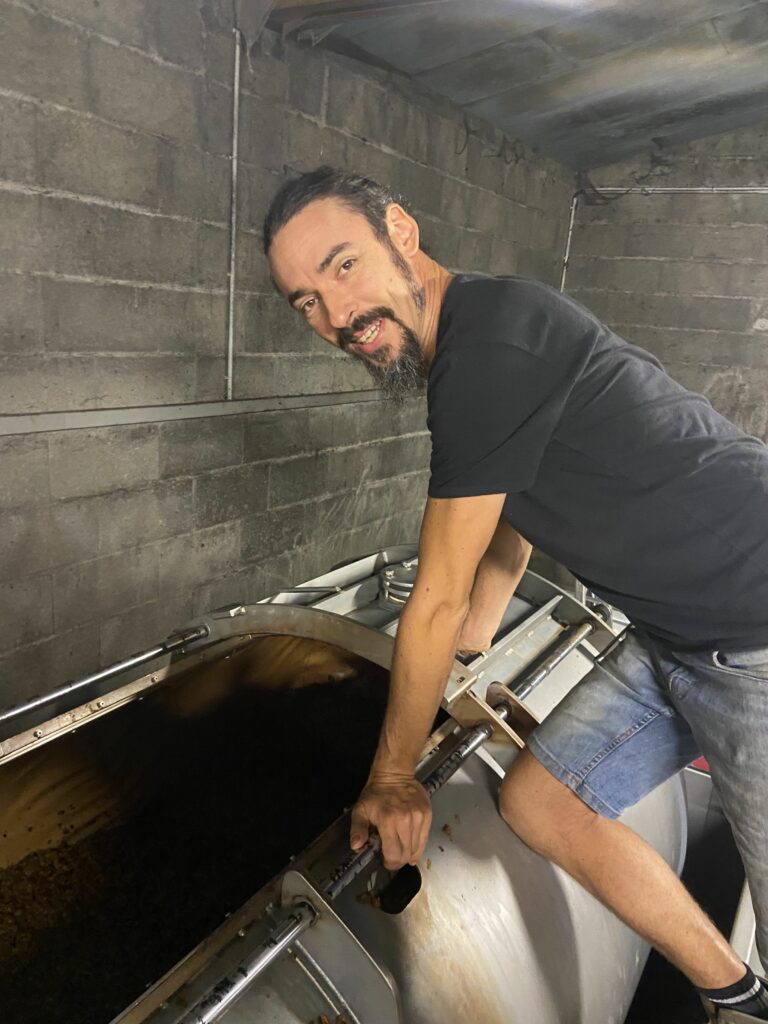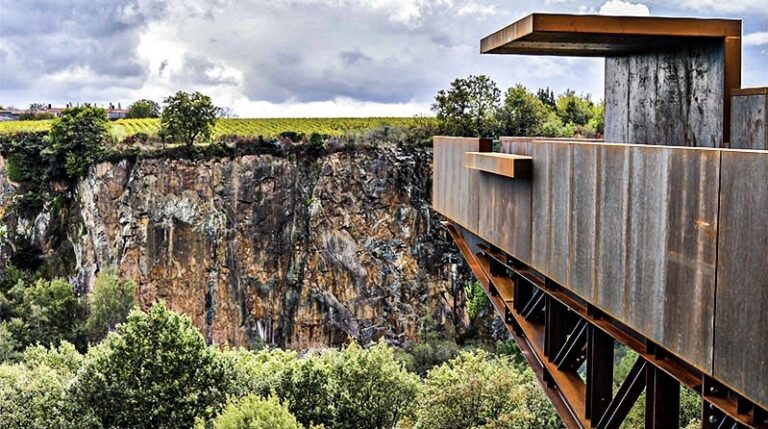
View of Muscadet Cru Chateau Thébaud’s impressive Granite bedrock, upon which Batard Langelier’s 50 year old Melon de Bourgogne vines are planted.
January 5, 2022
Muscadet Sèvre & Maine, Loire
It is always a pleasure to drive to Muscadet to meet Jérémie Batard and tour his vineyard at Batard Langelier. We love his zen-attitude and his quiet strength to work his vines and his wines in the cellar.
In 2021 Didascalie started to rightfully get the respect this cuvée deserves – as noted by critic Roger Voss at Wine Enthusiast magazine. We feature a video with Jérémie and Pascale to discuss the history of this parcel and why it is the heart of the range at Batard Langelier.
This visit was special for a very important: we *finally* tasted the two new cru vintages of the domaine – two new cru wines that Jérémie has been working on since 2019. As required by the appellations, the wines must remain on fine lees for 2 years and as the end of 2021 has passed, the wines are finally ready for bottling. We can confirm : IT WAS WORTH THE WAIT!
We now have the opportunity for us to take you to discover the two Crus: Château-Thébaud and Monnières-Saint-Fiacre and share their unique personalities!
Virtual Visit with Jérémie Batard
In the following video series, we have specifically recorded a these videos featuring Jérémie Batard (and father Pascal) talking about the Estate’s historic cuvée Didascalie, the diversity of Muscadet terroirs, and the TWO new Cru vineyard cuvées that are finally ready to launch: Chateau Thébaud & Monnières-Saint Fiacre.
– Cuvée Didascalie: The Heart of the Muscadet Range
– Interview with Jérémie Batard: Why CRU Muscadet?
– Focus CRU Vineyard : Chateau Thébaud
– Focus CRU Vineyard : Monnières Saint-Fiacre
– 90+ pts Wine Enthusiast Scores
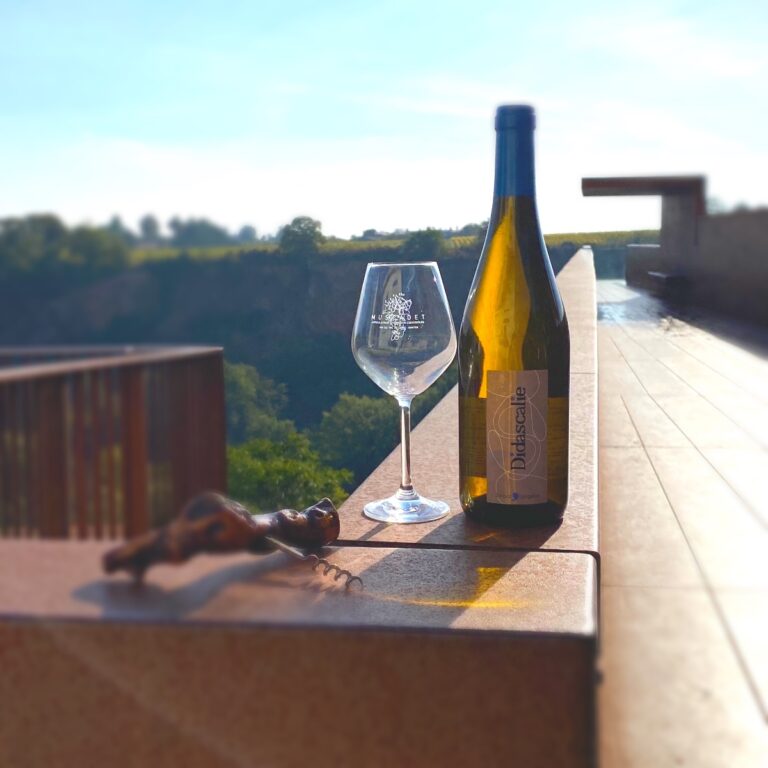
Didascalie: The Heart of the Muscadet Range
The vines from which Didascalie wine is made have always been known to be the best of the Batard Langelier Estate, not only in the time of Jérémie and his father Pascal, but well before them in the times of his grandfather and great grandfather.
When Jérémie took over the reins of the domaine, it was on this parcel that he initiated the conversion to organic farming. Over the years, he has witnessed the potential of this terroir to express all the complexity of Melon de Bourgogne.
Domaine Batard Langelier’s heart of the range, cuvée Didascalie, is featured in the video below. In discussion with two generations of the Batard Family, Jérémie and Pascal, we discover the history of this wine, reveal why it has always been such a special cuvée in the Batard Langelier range, and identify what kind of expression this Muscadet delivers specifically from this parcel.
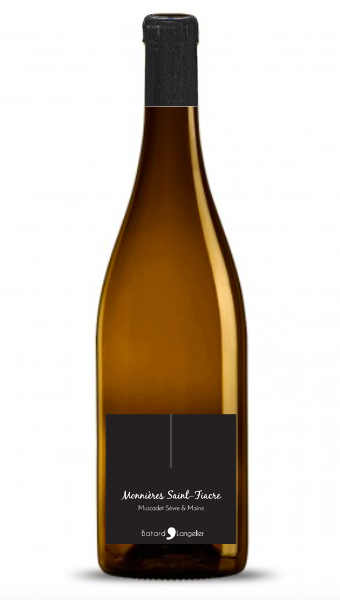
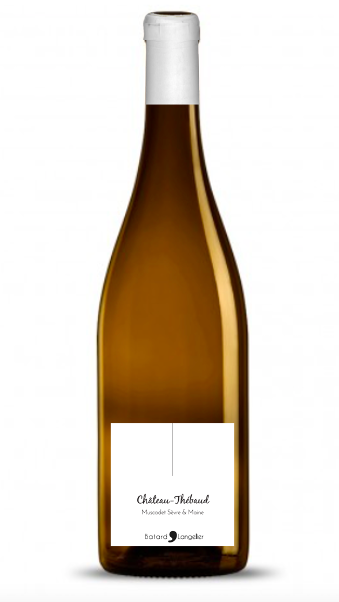
NOW AVAILABLE: Batard Langelier CRU Muscadet
Interview with Vigneron Jérémie Batard : Why CRU Muscadet?
GW: Why did you decide to make Muscadet Crus (as opposed to the basic Muscadet appellation)?
JB: The Muscadet Crus represent the top of the range in terms of wines from the Nantes vineyards. … I think it is important to have Crus to offer, it helps to build the Muscadet appellation reputation, to prove to the most skeptical that we have exceptional terroirs and a real know-how.
The Crus are produced from a long maturation on lees for a minimum of 24 months, they express the subsoil and the different terroirs of our vineyards.
GW: Why these two Crus in particular?
JB: On the commune of Maisdon sur Sèvre we have the possibility of making 3 crus, Château Thébaud, Monnières Saint Fiacre and Clisson.
Historically, we have parcels of vines on the Gneiss soils, which are perfectly suited to the vinification of the Monnières Saint Fiacre terroir, as well as a parcel on the Granite soils, located on the banks of the Maine river, which is suitable for the vinification of the Château Thébaud terroir.
GW: How did you find the vines?
JB: For the most part, they are historical vines of the estate, and some were added to our estate following the retirement of a neighboring winemaker.
GW: What are the rules of the Cru AOC’s – Are they the same for both CRUS?
JB: The AOC rules of the different crus are quite similar. The wines of these crus are made with an extended ageing on lees, from 18 – 24 months minimum, with low yields, and above all they express the subsoil of their great terroirs. There are 10 Muscadet crus, each with its own personality. The terroir differentiates them from each other, and their distinctive markers can be perceived in the glass.
GW: What is the Surface Area for each CRU ?
JB : For the Château-Thébaud Cru, 0.5 hectare, an additional 0.5 hectare scheduled for plantation this year, so we will have 1 hectare total.
For the Monnières-Saint-Fiacre Cru, we cultivate 1 hectare.
GW: What are the comparative styles of the two contrasting plots ?
Château-Thébaud is located on a steep hillside on the banks of the Maine River. On this high hillside, the landscape opens up and you can see the steeple of the church at Château-Thébaud in the distance. The soil is sandy (from the disintegrated rock) and shallow. The vines are located on a subsoil of a solid granodiorite (calco-alkaline granite) and gneiss from this impressive granite.
Monnières-Saint Fiacre located on a small hill between Sevre and Maine near an old windmill. The soil is rather gentle sloping, of rather fine and sandy texture, of average depth. It is more clayey on the alterites, these geological formations born from the decomposition of gneiss.
CRU Focus : Château-Thébaud
Château-Thébaud is the smallest of all the Muscadet crus. Jérémie explains the unique terroir born from the granodiorite mother rock, which has a grainy texture close to granite but darker in appearance, made of quartz, plagioclase feldspar and micas.
From this mother rock, located at a very low depth, sandy and well-draining stony soils were formed (by disintegration of this rock). A presence of clay allows a good maturity of the grapes. It is a rather early-ripening terroir for the 50+ year old vines.
The wines are elegant, with a freshness and a lot of finesse.
CRU Focus : Monnières-Saint-Fiacre
At Cru Monnières-Saint-Fiacre, we are really in the central cru of Muscadet because the vines are located between the two rivers: the Sèvre and the Maine. It is a cru with more altitude, where wind-mills are often found.
It is a subsoil of gneiss, on the plot that Jérémie works, where the soils are not very deep (40-60 cm).
Throughout the maturing process, the wines gain in complexity and we often note a finish with subtle bitterness that brings a refreshing note, the wines develop a very smooth texture on this terroir.
Wine Enthusiast Scores Batard Langelier 90+ Points!!
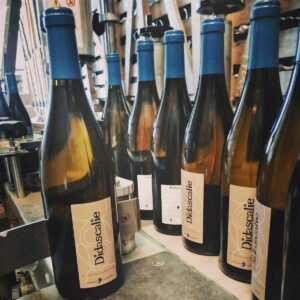
90 Points DIDASCALIE 2018
From vines planted in magma soil, this is a textured, mineral wine. A tangy character suggests citrus as well as kiwi fruits. The wine is cool, crisp and now ready to drink. -ROGER VOSS
91 Points MÉTAPHORE 2019
Bottled without sulfur, this wine is ripe and lightly mineral in texture, with concentrated, ripe apple flavors. The fruitiness is still developing and this intense wine will be better from late 2021. -ROGER VOSS
